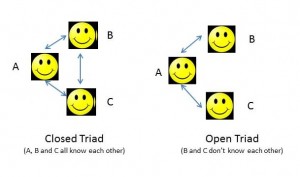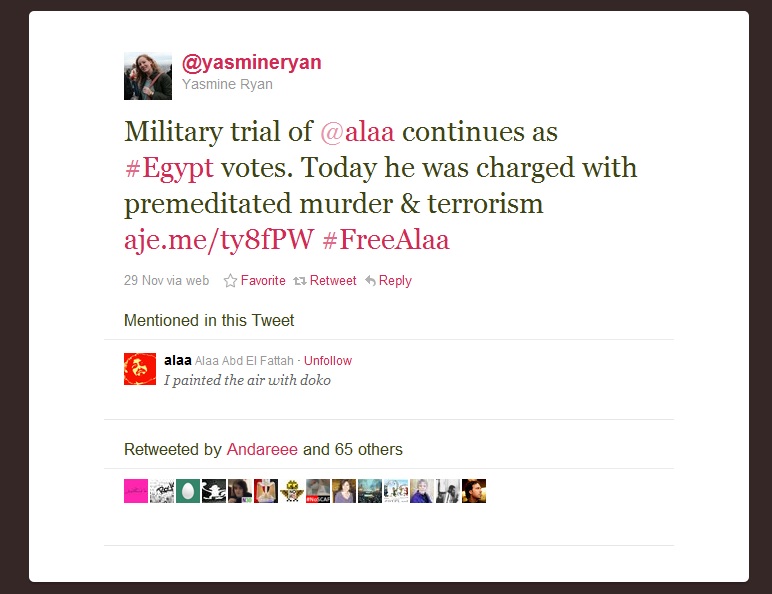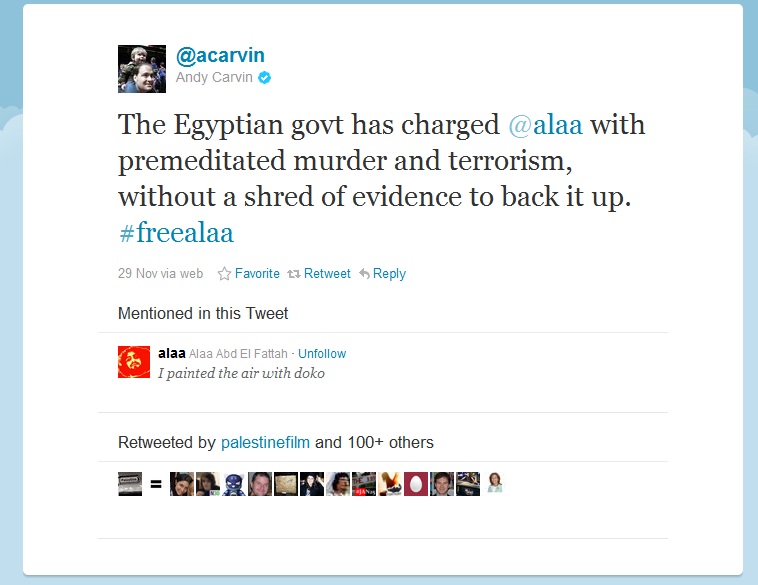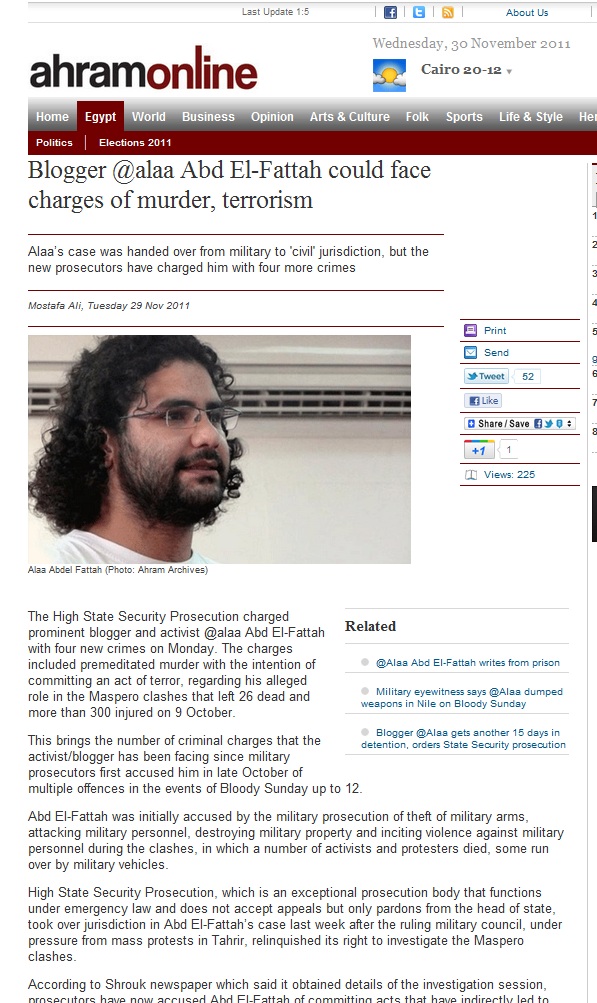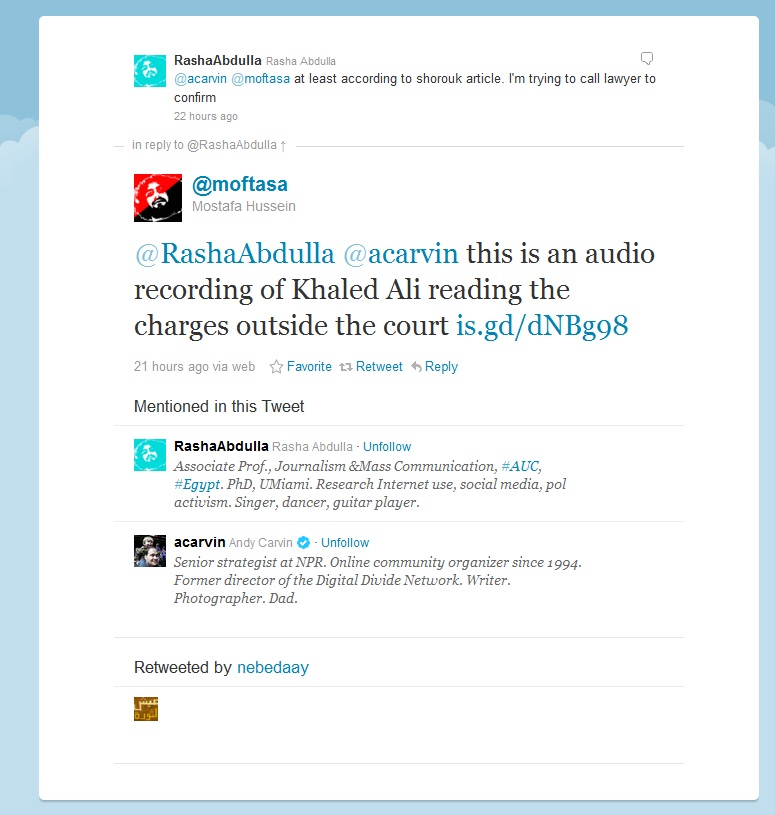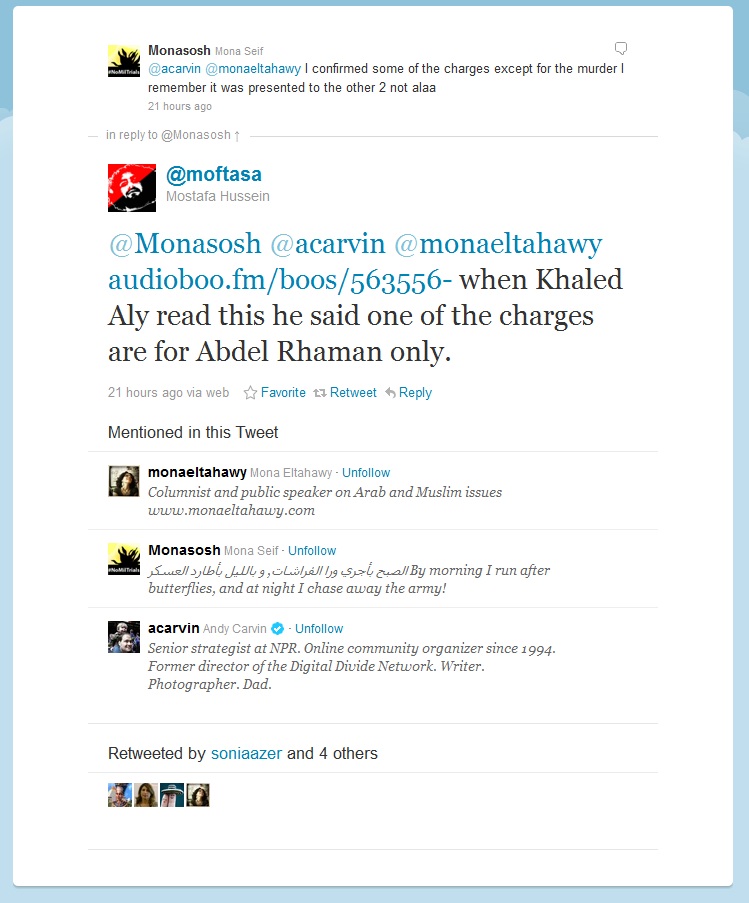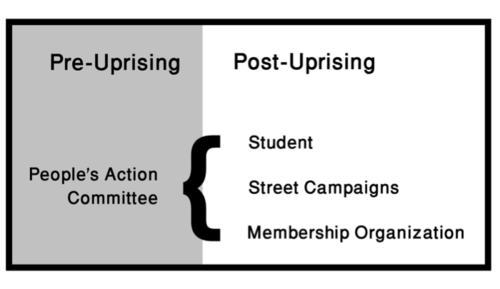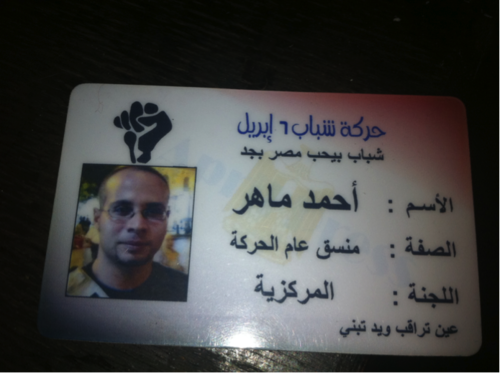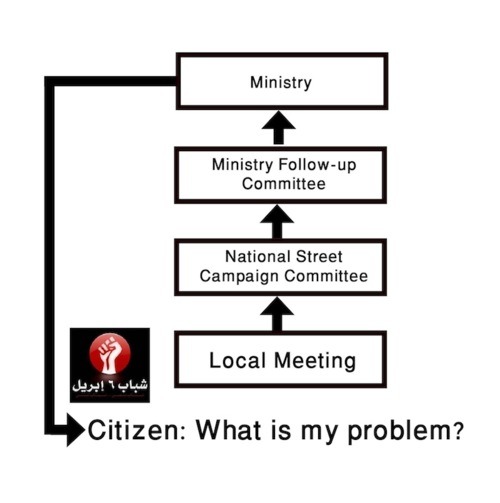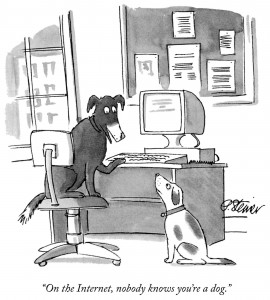#FreeMona
It was a calm, quite night, almost nine o’clock, on the eve of Thanksgiving holiday when, out of the corner of my eye, a tweet shook me:
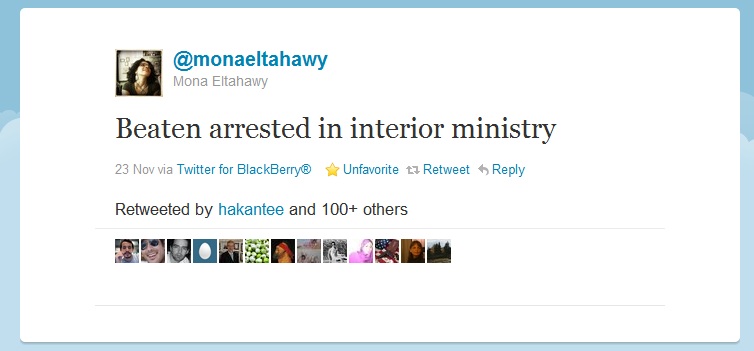
Egyptian-American writer and my friend Mona El Tahawy, who had cut her trip in North Africa short to join the exploding Tahrir protests in her native country, had just sent that out. Short, uncapitalized, clearly written in a hurry. And with that, she went silent.
As a scholar and a concerned citizen, I had been following Egypt’s revolt closely. I knew that the security apparatus in Egypt had, in some ways, grown even more arbitrary since the ouster of long-term autocrat Hosni Mubarak after 18 days of intense protests in Tahrir. About 12,000 civilians had been detained and were subject to “military trials”. Since the eruption of new protests, at least 35 protestors had been killed and thousands injured. A few weeks ago, a prisoner, Essam Atta, had been tortured to death in prison.
At worst, Mona’s life was in danger. At best, she would likely be subject to beatings, sexual abuse.
As I stared at the tweet as my mind raced back to my conversations with Mona about her days in the American University of Cairo and her lifelong, outspoken opposition to Egypt’s autocracy. Because she was a Guardian columnist, a prolific tweeterer and a public speaker, she was identifed with the Egyptian uprising by many. She would certainly be in trouble with her country’s military rulers.
Her tweet stream indicated that she was near Mohammed Mahmoud street, where clashes had been going on for days between protestors and CSF, the paramilitary police. Most likely, I thought, she was apprehended by people who did not know of her global standing, but saw her as a woman out in the street late at night involved in protests–and I knew this too would be a big danger to her. Soon, though, mid-level higher-ups would discover that she was relatively well-known–and her treatment from then on would likely depend on public reaction to her arrest–both in Egypt and globally. Prominent Egyptian activist and my friend Alaa Abd-el Fattah, who is now in prison under the military trials regime, was also arrested in 2006 and spent six months in Mubarak’s jails. Alaa later stated that the global campaign to free him probably caused him to spend more time in prison, as the regime realized they had a valuable target, but also spared him from torture.
When activists are arrested, in some cases, it is best to keep it quiet. In some cases it is best to kick up a big storm. Worst option, however, is to kick up a small storm which irritates the powerful, but without enough strength to nudge them to action. Considering the options, I thought Mona needs the latter, and probably cannot be quietly freed anyway. As a woman, she’s in danger from the low-level police who now have her at their mercy. She needs to be plucked out of there, and that requires high-level intervention. As a prominent dissident, she is in danger from those higher-ups who might want to make an example of her the way they are currently doing with Alaa. Mona needed a huge campaign which made it costlier to keep her than to release her.
A few decades ago, contemplating launching a global campaign like this would require that I own, say, a television station or two. I hadn’t even unpacked my television set when I moved to Chapel Hill to take up a position as an assistant professor in University of North Carolina. Heck, I dodn’t even have a landline phone. But, “I” wasn’t just an “I.” Due to my academic and personal interests, I was connected to a global network of people ranging from grassroots activists in Egypt to journalists and politicians, from ordinary people around the world to programmers and techies in Silicon Valley and elsewhere. My options weren’t just cursing at a television set –if her arrest had even made the news in the next few days. I could at least try to see what *we* could do, and do quickly.
Concise, fast, global, public and connected was what we needed, and, for that, there is nothing better than Twitter.
I immediately reached out to Andy Carvin, NPR journalist extraordinaire who’s been covering the Middle East uprisings, and a friend of many years going back digital divide efforts, a topic which I’ve long studied as a scholar. I was very happy to see he was online and, of course, similarly aghast at Mona’s situation.
One challenge of new media environments is that they scatter attention and consequently tools and channels which can unite and focus attention are key to harnessing their power. Hashtags and trending topics are one way in which people can focus among the billions of tweets floating in cyberspace. In fact, a key dynamic in “social media” is that it works best when coordinated with “focusers”: trending topics, Al Jazeera, Andy Carvin (whose stream is widely followed) are all focusers, albeit very different ones (Well, one is a satellite TV channel, one is a cool guy with a very cute, huge dog, and the last one is an algorithm). Hence, the “Occupy” movement was deeply disappointed when Andy Carvin did not cover them, as his beat was Middle East, and as he already works about seven days a week. Occupy activists knew that without Carvin, they had lost a potential focuser. (Police brutality and overreaction solved that problem for Occupy movement by garnering traditional media coverage which served as a crucial focuser).
So, first, I knew we needed a hasthag. A focuser.
Wanting a short one due to Twitter’s character limits, I proposed “#Mona”. Andy quickly checked and realized that it was already in use and suggested “#freemona.” I tweeted out an agreement and opened a column in my Tweetdeck to check only tweets tagged “#freemona”. In about a minute, the column started flowing too quickly for me to read everything.
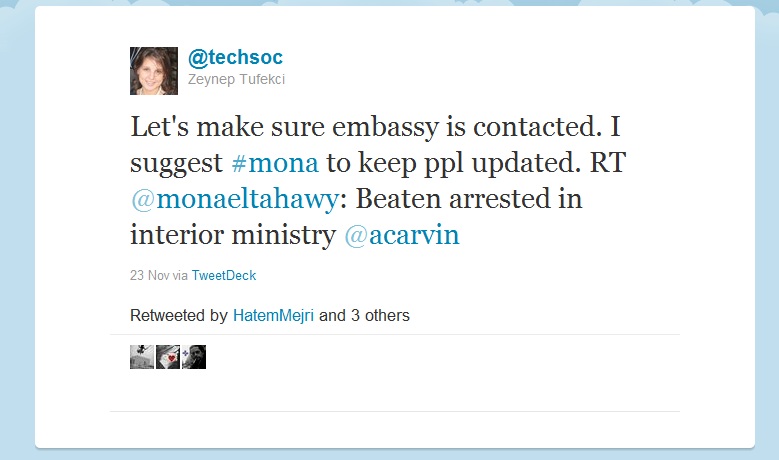

20 minutes later, #freemona was trending worldwide.

Ok, that’s the global campaign, I thought as I marveled at how quickly it had taked off with barely a nudge. In the pre-social media world, it might have taken weeks and a lot of luck to achieve even a sliver of such awareness globally.
But that wasn’t the only leg of our frantic, crowdsourced efforts. @Cairowire, curated by @sarahbadr, contacted the US Embassy — and informed us of this fact on Twitter so we could avoid flooding them with calls. She live-tweeted her call so we could provide as accurate information as we knew in response to questions from the Embassy. Was she a US citizen? I knew she was, and others chimed in. Where was she seen last? What was her birthday? I looked it up and answered. Who was she with? People chimed in with what they knew. @Cairowire told us the embassy had taken down the information.
Many times, the most dangerous moment for a dissident or an activist is the police station where low-level functionaries can have impunity to do the worst. The combination of her gender, personality, citizenship and her role as a media person was a very dangerous mix for that “police station” phase. We needed to try for very high-level intevention to pluck her out–and it was almost 4am in Cairo and a holiday in the United States.
With very similar thoughts –and we were constantly conversing–, Andy Carvin and I both reached out to Anne-Marie Slaughter, prominent Princeton professor and former advisor to Hillary Clinton. She’s probably better known to most people as Twitterer extraordinaire, @SlaughterAM where she can be regularly found mixing it up with high-level politicians, activists, ordinary people around the world. To my relief, she was online. She jumped to action. Soon, she reported that she had reached out to her contacts at the State Department, and that this was being dealt with at the highest levels as the urgent situation it was:
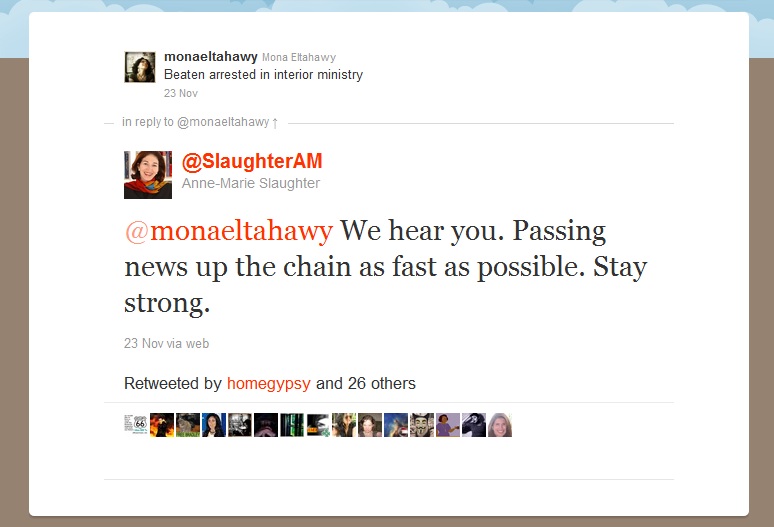
Egyptian activists on the ground, who had been organizing against the arbitrary arrest and detentions, were best placed find her and to provide her with legal and other resources. Cairo never sleeps, and, sure enough, many of them were online. Shahira Abouellail, @fazerofzanight, who works tirelessly with the no military trials campaign responded quickly and informed us of the likely sequence of events, places she might be at and that she would make sure that lawyers would start looking for her early in the morning. (In fact, all through last week, Shahira had been talking about all the people being detained, beaten and abused as the protests grew).
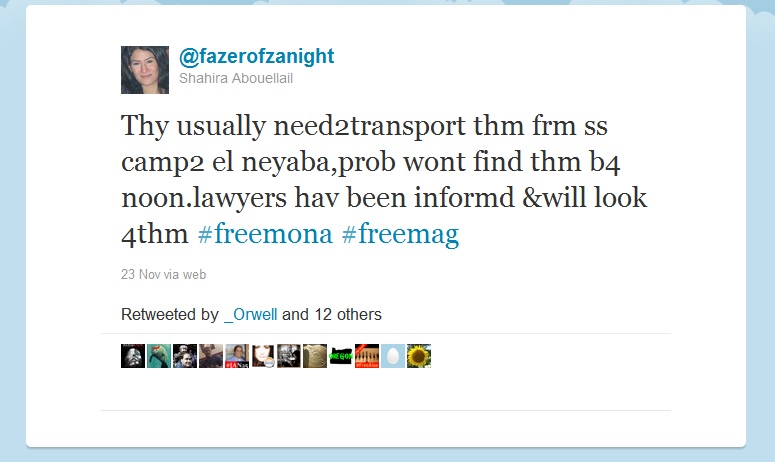
A similar outreach effort was launched, especially to the tech community, to see if Mona’s tweets, or tweets of people we thought might have been arrested with her, contained geolocation information which was available to Twitter (as storified by @katz):
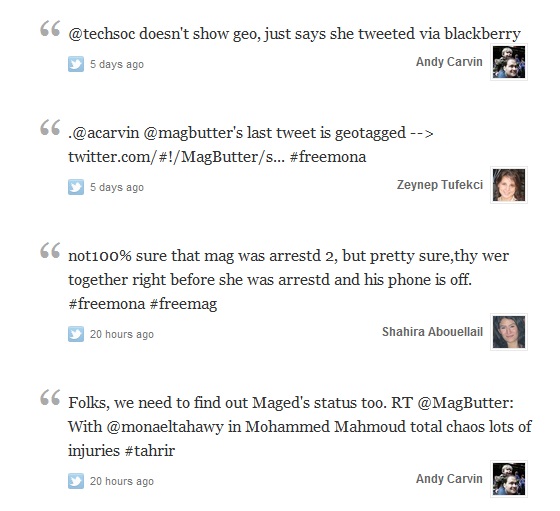
Soon, though, that turned out not to be the case (although that had been essential in confirming the arrest of Slim Amamou, for example when Slim “checked in” at the Ministry of Interior in Tunisia during the protests.)
Finally, at the same time, global media had started picking up on Mona’s disappearance. I urged my Egyptian tweeps to contact local media as exposure can sometimes be the best protection for a dissident as storified by@katz):

Many people misunderstand the power of publicity on repressive regimes. Just because the power of a state is relatively unchecked by institutional balances does not means that it has infinite repressive capacity, or that it is unconcerned about public opinion. All regimes, even the most repressive ones, are concerned about legitimacy and appearances. In a debate with Andrew Rasijej, Evgeny Morozov tweeted the following:
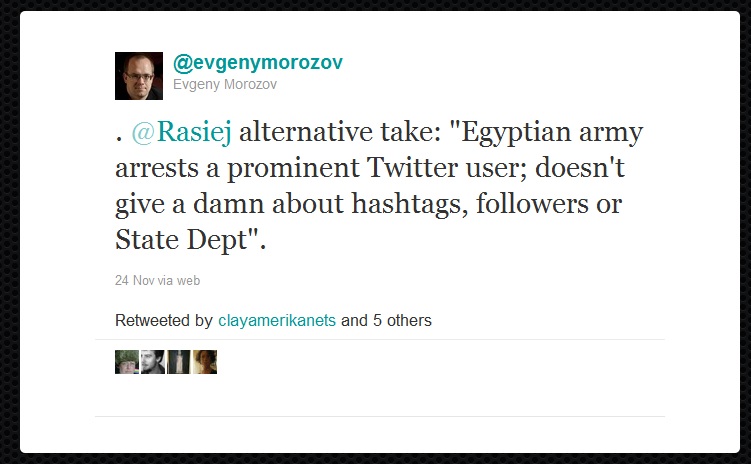
This, of course, is naïve. Egyptian army absolutely gives a damn about social media. You only need to notice that they have their very own Facebook page and release their “communiqués” solely through Facebook.. Why? Because, like all repressive regimes, they realize that their power rests not just on coercion, but also a degree of legitimacy and acquiescence among the public–and the public sphere increasingly incorporates networked citizenry on social media. Hence, they are there where they rightly perceive many Egyptian activists and citizens are. In the 21st century, no regime worth its salt will ignore social media; those who do will find themselves looking for places to retire.
In fact, I know of no better proof about the power of social media to potentially empower dissent than the numerous anecdotes in Evgeny Morozov’s book about the extraordinary efforts authoritarian regimes go to suppress, control and censor social media. If it were actually irrelevant, they would have happily ignored it. Instead, they are on full-alert, attempting to fight social media on all cylinders.
It’s also naïve to think that the Egyptian army does not give a damn about the State Department, especially when it comes to releasing activists. SCAF, like all repressive apparatus, makes calculations about costs and benefits–and keeping a prominent journalist in detention becomes more costly when combined with a global publicity campaign, State Department pressure, Egyptian activists, as well as local and global media coverage.
Of course, such global campaigns also play a role in how State Department acts. State Department is the foreign policy arm of the most powerful country in the world and, as such it will act according to what it perceives as the foreign policy interests of the United States. However, global campaigns can make it harder for foreign policy interests of the United States to align with supporting repressive regimes. (I personally and strongly believe that the true and long-term interests of the United States also lie in this direction and that historians will look at its support for repressive regimes as colossal mistakes). I believe that social media can help us organize to make sure big governments are pushed to do the right thing. Besides, State Department, like any other institution, is composed of people and I am sure some of those people would rather help do the right thing. “The Whole World is Watching” is such a resonant slogan for a reason.
So, it was a perfect storm. A global social media campaign, institutional power, grassroots Egyptian activists, network-savvy global players and traditional media converged upon Mona El Tahawy’s case. It had been merely a few hours and I thought that all that we could do was done. People on the ground were aware and mobilized, global media was covering the event, official attempts were being undertaken, and a global conversation of concern was taking place in the still dizzily flying #freemona column on my monitor. I went to bed, still buzzed from the frantic activity but in need of some rest.
After a few hours of restless sleep, I woke up and immediately checked my Mona’s twitter feed. It beamed, “I AM FREE”:

Sexually assaulted, beaten, arms and hands broken, but in high spirits, she was out. Through broken bones, she detailed her ordeal first on Twitter, and later on CNN, BBC and Egyptian local media and beyond:

Social Media’s Role: Untangling Causality in Social Science
Was she freed because of the global campaign? While it is always important to carefully consider the evidence, in social science, always beware of people who automatically say “But you haven’t proven it!” because that shows they either don’t understand how social science works, or they do and they are disingenuous and are seeking argument for the sake of argument or attention. That’s just now the way it works in social science.
To put it bluntly, there is no way to conclusively prove anything in social science simply because we cannot do real experiments. (Take the identical person, place them in an alternative universe under equal conditions except social media and see how it would evolve. You see the problem: no alternate universe, no time machine, no cloning technology). So the question is never “did you prove it” but rather “what’s the evidence, what more data can we bring to this question, what’s our conceptual model and is it convincing?”
Social scientists do advance knowledge. As always, the more data the better. However, almost always, data remains suggestive and associative (it seems more of X was associated with more of Y). In order to understand a dynamic, we also look at causative mechanisms, narratives, comparative cases and limits — what’s missing and not happening as what’s not happening can be as useful.
Good analysis in social science also requires good theoretical understanding which basically means correctly conceptualizing the dynamics in play. Start wrong, and you aren’t going anywhere.
Most important conceptual point is this: The idea that “social media does help make X happen” DOES NOT mean it was just social media–because that is a theoretical stance which views social media as not part of this word. In fact, critics of social media often fall into this trap as they keep repeating “it wasn’t just social media” as if that were a valid criticism. To state “it wasn’t just social media” is a mere and trivial description of the world, not an analysis of dynamics of how social media plays a role – was it big or small? Was it crucial or trivial? What were the pathways?
“It wasn’t just social media” is not a refutation because as stated, that sentence is devoid of cognitive content.
This theoretical stance is also why I try to avoid terms like “virtual” because it suggests something “not real”. Social media is “real”, as real as anything else out there. Nathan Jurgenson and PJ Rey call this “augmented reality”. I prefer to call it just reality.
The interesting question is, always, what role did social media play in altering dynamics of an event? And at first level of abstraction, the answer is often, yes, social media played a role because it is now an increasingly integral and important part of communicative infrastructure, part of the formation of the public sphere, part of networked activism, and part of everyday life. In the 21st century, it will be increasingly impossible to do political analyses without discussing social media dynamics as an integral part of the story.
You cannot tell the story of the Arab uprisings, for example, without including the story of the role of social media. Again, though, that is obviously not the only dynamic–how could it be? As Clay Shirky nicely explains here, when people say “Social Media did X”, they mean that it played an important role because that is how the English language works. When we say, “A person was shot by a gun” we don’t mean “the gun got up and shot the person” (well, not yet anyway as robotics may change that); rather, we mean that “someone pulled the trigger and that it is important that the weapon was a gun” –a lot more lethal–than say a pointed stick –much less a danger–or a knife– still dangerous but slower and often more survivable. Hence, the full story of the Arab uprisings will include determined activists, labor unions, human-rights advocates, ordinary people, Facebook and Twitter, protests in Tahrir, dissension within the elites, United States and other governments and many other factors. But, it doesn’t include everything so this is not a laundry list. Sword fights, for example, were not part of the equation in the Arab Spring as they would be if it were an uprising in the Middle Ages.
So, to conceptually analyze the role of social media in Mona’s case let’s look at what it did do, as well as comparative cases of its limits and challenges.
Social Media and Dynamics of a Global Campaign
1- Speed. Social media speeds up everything.
Without social media, so many people wouldn’t have known so quickly that she was arrested, beaten. With one tweet, she reached out to tens of thousands of people all at once. In the past, there would have been a response, but it would likely have been much slower. A campaign by Amnesty International in the old days might take days to organize, especially during Thanksgiving. And “slower” and “faster” are just not the same dynamic for multiple reasons. In other words, something faster doesn’t give you what something slower would give you, just quicker. It results in a different conclusion. Faster is different.
2- Social media allows for complex, diverse ad hoc networks to come together:
I cannot fathom getting a such diverse group of people ranging from journalists to Egyptian activists to State Department officials responding to the same situation, in a coordinated fashion, so quickly, without Twitter (and a few emails. It was almost all Twitter). Even simple questions can be a nightmare to organize. Who will call the embassy? What’s her date of birth? Who’s arranging the lawyer?
3-Social media is integrated in an increasingly global, networked public sphere:
Once again, people from Japan to Brazil to Australia to China talked about her disappearance. There is simply no analog to such grassroots-powered intervention in the public sphere, at a global level at that, pre-social media. Yes, it is not one big happy family but it is a level of integration that simply was not there a mere decade ago. Along with all the fractures, divides, inequalities, and conflicts, a networked public sphere has emerged. And it is global.
4-Social Media fosters personal interaction:
Because Mona was a prolific tweeter, she had interacted personally with many people in the past and that was probably important in her visibility. Before days of social media, she would be just a face on a newspaper column–still powerful, but not as personal. And personal connections matter deeply for human beings. And, yes, personal connections can flourish online as well as online/offline. She wasn’t just a face or a columnist or a public speaker– she was Mona to tens and tens of thousands of people.
5- Social media works for prominent people better (rich get richer):
Social media, like almost new tools, can differentially empower the already connected (rich get richer) as opposed to the completely or weakly unconnected. There are 12,000 people who were detained by military prosecutors in Egypt and many languish in jails without such attention.
However, this is not an either/or situation. Whether or not #freemona and #freealaa help others depends on whether they become “charismatic megafauna” –where a prominent example helps the whole ecology– or part of a “celebrity system”–where a few people get the attention in isolation.
Charismatic megafauna is how ecologists refer to popular animals such as the Panda or tigers–powerful symbols which help move people to preserve vast amounts of landscape. Ecologists aren’t just interested in playing with cuddly panda or tiger babies, and would like to save the whole ecosystem — but carefully and deliberately put faces of pandas and tigers on their campaigns because of the the way human brain and human societies work. It is just very hard to move large numbers of people without powerful and sympathetic symbols.
Mona and Alaa are both such powerful and sympathetic symbols and they are both aware of this. In spite of the fact that his wife is about to give birth to their first child, Alaa refused deals which would have gotten him released if only he would accept a few limits on his speech because he realizes the powerful symbolic position he occupies. In her very first interview, Mona immediately talked about her fellow detainees and how those less privileged than her face much worse fates. Still, though, it is not just up to their efforts whether attention bestowed only upon them. Activists and concerned people must be cognizant of this fraught negotiation between using the power of the spotlight on one person versus using it shine it on wider swaths.
This can’t be done just by complaining about the “celebrity” or “star” system as not only is that not going away (because it is a deep human impulse), and it is often the best way to start a campaign. The problem is making sure it doesn’t stop there–and that remains an open question and constant struggle.
6- Personal networks, unsurprisingly, remain the underlying key anchors of the global social media networks (hubs matter and hubs tend to be dense and interconnected among each other):
The strength of personal networks is in social movements and campaigns unsurprising. However, the point needs to be made explicitly because so many people still talk about “social media” as something virtual, or something “not real”. My observations and studies from the Arab Uprisings show that most of the key “hub” activists had deep personal connections among each other – connections which often started on social media, sometimes migrated offline, sometimes did not–but were nonetheless strong and deep. In other words, “strong ties” are important: the fallacy is thinking these ties are not aided by, or sometimes solely lived through social media. Such personal, powerful but relatively small networks also raise important questions about how things might have been different if either Andy Carvin or Ann Marie Slaughter were mashing sweet potatoes instead of being online that night? (The answer isn’t an automatic “totally different” as dynamic networks can both exhibit “hub-and-spoke” structures and replace “hubs” quickly if one is taken out. Still, the question is an important one to consider)
7- Traditional big interests remain powerful and, along with dynamics of the attention economy, social media cannot overcome all obstacles (Bahrain. Bahrain).
Egypt and Tahrir have managed to capture the world’s heart and interest. The ongoing protests in Bahrain –a smaller, less-populated country where U.S. and Saudi Arabia have much deeper entrenched interests and somewhat more complicated by ethnic tensions– remains mostly off the radar in spite of prominent online organizing and broad participation in protests.
That is not to say that social media played no role (it almost always plays a major role) in the Bahrain’s protests. In fact, most of the country is online and the battle for legitimacy is raged both online and in the streets. Without the Internet, the opposition in Bahrain may have never managed to organize and mount such a campaign. With the Internet, it can mount such a campaign but cannot overcome the limits of being a small country in the world’s oil-producing region, hence very big interests aligned against it. (As this story is ongoing, it remains to be seen how it all plays out). I would still argue that social media has made it harder to suppress Bahraini citizens’ aspirations for more democracy and participation. A more complex case is unfolding in Syria (not going into that as this post is long enough) where lack of organized dissent before the uprising makes it very hard to use social media to organize.
8-Just like pre-social media, it remains easier to organize for “no” harder to organize complex discussions:
Again and again, social media have proven very useful in organizing single issue campaigns “Down with X” or “Release Y” but it is a lot more complicated to organize a complex course of action. This, of course, is not a feature of social media but a feature of life — a “no” is more simple and only requires agreeing to a single point whereas the space of all possible versions of “yes” is vast and complicated. Social media does not magically solve this problem. Wikipedia is a very important example in this regard, both to understand the possibilities (pretty useful, fairly accurate entries are produced most of the time) and the limits (Wikipedia is a high-conflict, mostly-male environment with powerful “wikignomes” who wield a lot of power.)
In the end, did the #freemona campaign help free Mona? My conclusion is that it quite likely played a key role, as analyzed in the above multi-layer mix. Without a social media campaign, she might have languished in jail for days or months the way thousands of people on whom such attention is not bestowed in Egypt are languishing in jails. As a U.S.-Egyptian dual citizen, as a columnist, as a prominent social-media personality, and as someone with many personal connections who could be mobilized to help her, she was well-positioned to be helped by these efforts. I also don’t doubt that the attention her case is getting will help bring more attention to the problem of arbitrary detentions, arrests and military trials in Egypt – again, compared to a pre-social media world where there would be zero to no attention, this is a massive step forward. (Added: By no means this is enough–I am comparing with the past rather than making a normative statement).
As always, though, a complex mix of causal factors, from protests in Tahrir and elsewhere in Egypt to international geopolitics will structure the future of Egypt. It is also clear that the networked public sphere is now an integral, causal dynamic in this multi-dimensional, multi-causal system. This makes it even more important to move beyond trivial denounciations –“it wasn’t just the social media”– to a deeper understanding which looks at specfic actors, dynamics, networks and beyong to understand, and also, to change this world.
PS. Edited the evening of Friday, Nov. 25 to correct typos, add links, and slightly clarify a few sentences which were missing words. May continue to edit for typos and for adding links. On Monday, November 28th, I added a few more tweets using the excellent storify by @katz which can be found here.

